In France’s Creuse, a heritage of 19th-century painters is revitalising a rural region
The villages of Crozant and Fresselines are at the heart of the "Valley of the Painters" in France's Creuse département. Local authorities are working to revive this forgotten rural region, but there are many obstacles to becoming a serious tourist destination.
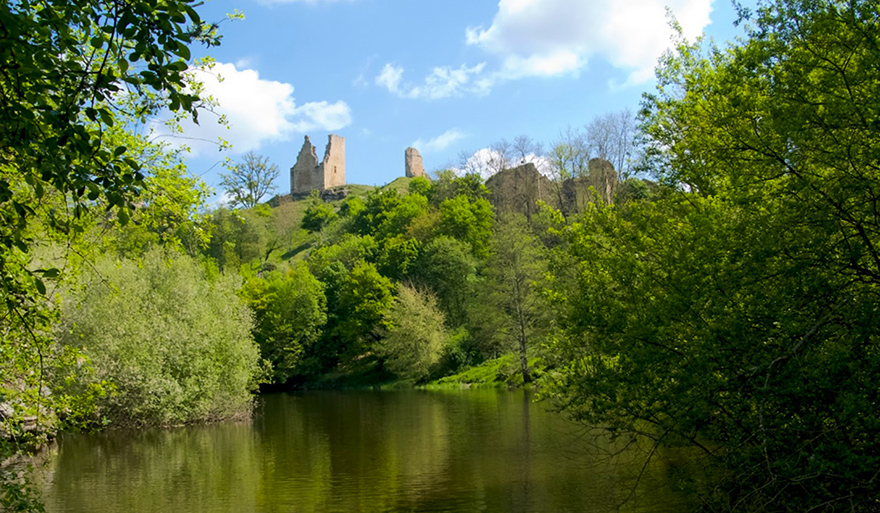
Crozant, Fresselines (France)
"No, the Creuse is not a hole, it's a river!" Catherine Defemme, vice-president of the Creuse council, is vehement in defending her département (county). Those who think that there is nothing in the Creuse (whose name resembles the French word for “empty”) are mistaken. On the border with the neighbouring Indre, it plays host to the “Valley of the Painters”, whose landscapes inspired many 19th-century artists. On the Creuse side, the Pays Dunois community of municipalities, which includes the villages of Crozant and Fresselines, represents the heart of the valley.
Forgotten during the 20th century, the Valley of the Painters has in recent years reawakened interest on the part of local authorities. The project to develop the valley, led by the départements of Creuse and Indre, dates back to the 2000s. But the notion of a "Valley of Painters" only really emerged in the early 2010s, with the opening of the Interpretation Centre, a visitor hub, in Crozant in 2014.
The Creuse department wants to create a proper tourist destination and has received a grant of more than €108,000 from the European Union (ERDF) to develop projects on all the sites. The building renovations at the Interpretation Centre and the Espace Monet-Rollinat in Fresselines were also funded by the European LEADER programme, which supports rural development.
"Getting people to walk through the paintings"
Between 500 and 600 artists, including Monet, Guillaumin and Picabia, came to the Creuse valley between 1830 and 1930 in search of inspiration. Most of them have been forgotten. But the valley had its golden age during the Impressionist period, when it became a major centre of landscape painting. Yet there is a paradox: there are very few original works by these great artists in the Creuse. "We had to build a cultural and tourist offering despite the fact that we don't have the artists' paintings," says Pierre Veysseix, director of the Pays Dunois tourist sites. Of the 23 paintings that Claude Monet produced in Fresselines, only three or four have remained in France. The others are mostly exhibited in large museums on the East Coast of the United States. These paintings correspond to Monet's first series, painted in the spring of 1889.
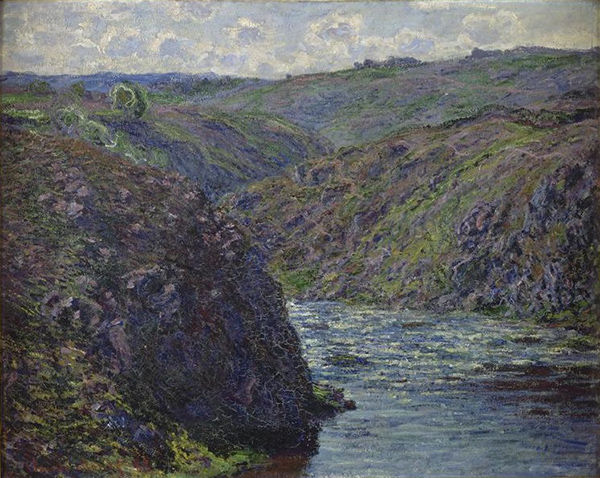
But although the Creuse does not have the paintings, it does have the subject matter. "You can have people walk through the paintings," says Pierre Veysseix. Tourists can take two explanatory trails. One is in Crozant, called the Painters’ Trail ("Sentier des peintres"). The other, in Fresselines, is titled “In the Footsteps of Monet” ("Dans les pas de Monet"), being dedicated to the father of the Impressionists. "You feel like sitting down and just looking. You can understand why the painters came!", says Marianne, a tourist returning from the Painters' Trail.
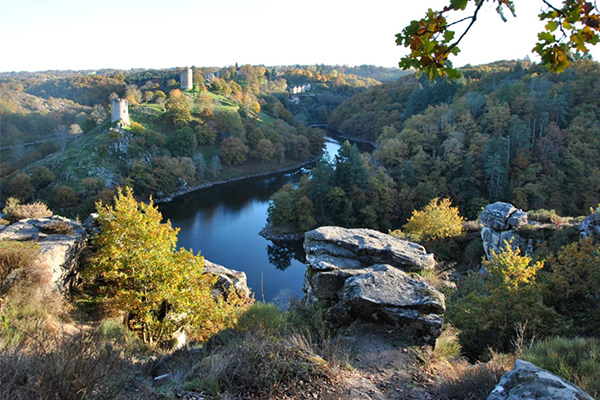
The other attraction of Crozant is the medieval fortress, or rather its remaining ruins, which overlook the confluence of the Creuse and Sédelle rivers and offer a spectacular view. And in the heart of the village is the Interpretation Centre, located in the former Hôtel Lépinat. This was an inn that played host to artists during the 19th century, including Armand Guillaumin, a leading figure in Crozant.
For exhibitions, "the Interpretation Centre relies on private collections", says Tiphaine Hirou, cultural coordinator at the Hôtel Lépinat. Many paintings are loaned by private individuals or donated by local artists. Moreover, the town halls of Crozant and Fresselines are filled with canvases left by various painters, and look like small museums.
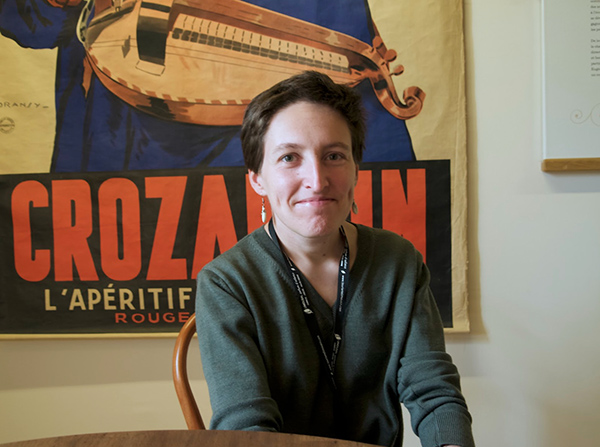
A success story
By promoting the area, the local authorities obviously hope to boost the local economy. The Valley of the Painters is one of the Creuse's showpieces, highlighted in national advertising campaigns. And people are coming: the Hôtel Lépinat recorded 6689 visitors in 2021, and 6854 for the Espace Monet Rollinat, which is up on previous years.
Tiphaine Hirou has also noticed a surge in visitors since the Covid lockdowns: "Tourists are looking for places that are less crowded". In 2020, the economic benefits of tourism in the Valley of the Painters (on the Creuse side) were €6.3 million (source ORTL/ADRT23).
The few shopkeepers in Crozant and Fresselines are generally enthusiastic. In a region where most visitors come between May and September, all tourism is welcome.
The only bar left in the centre of Crozant, L'Éclat de Soleil, has been run by Maria for 21 years and she is quite satisfied. Between art lovers and hikers, her clientele is varied. "We're not at full capacity every day, people come a lot at weekends and in July and August. But the efforts of the local authorities, the advertising, it's made our Creuse better known. That's great!"
Cécile and Aldert, owners of the Hotel du Lac on the banks of the Creuse, agree. "It's very good, it gives an identity to the area which was really missing. There’s a coherence and it makes people stay." The hotel is indeed fully booked that weekend.
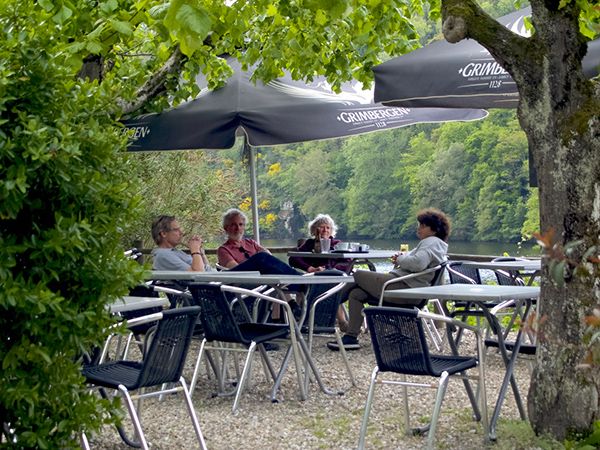
Second phase of the project: "developing accommodation and gastronomy"
And yet, although the cultural infrastructure is in place, economic development has yet to fully materialise. Most of the protagonists make the same observation: the project is in a state of in-between. According to Catherine Defemme, in charge of hospitality and culture at the département council, the local authorities must now go further and enter an "operational phase". "It's easy to sell an image, but what people actually find has to be up to scratch. And at the moment, it's true that we're not doing well in terms of accommodation and restaurants. We need to work on this aspect of hospitality."
"For people to come, we'll have to better organise the accommodation and catering on offer," confirms Pierre Veysseix. In his view, this area of the Creuse "lacks a tourist culture". He mentions, for example, rubbish collection and the maintenance of the heritage trails, which are sometimes too irregular in the middle of summer.
Tiphaine Hirou also considers that the region is not used to tourism, and regrets, for example, that the Painters' Trail has only been closed to cars for a year. She also remembers times when the few restaurants in the area were closed on the same day. "Here, people are used to working during the season, except that in reality we have more and more tourists who come in the autumn and spring. [...] The difficulty is to get everyone to work together."
The mayor of Crozant, Didier Lavaud, is aware of the challenges ahead. "For the moment, we don't have the capacity to keep people for more than a day, we have a lot of tourists passing through." He is counting on the planned redevelopment of the village centre to revitalise his community of barely 500 inhabitants, scattered over dozens of small hamlets, and which no longer even has a bakery. For him, the tourist potential of Crozant is the only way to keep the village alive. "Crozant is authentic and natural, that's what people want. So it's up to us to make them come and then leave satisfied."
Another major renovation project in Crozant concerns the ruins at the foot of the old fortress. Abandoned several years ago, a hostelry here could well rise again on the site. The idea of a renovation has been floated, but it remains to be seen what will be done. What is certain is that patience and tenacity will be needed to bring these initiatives to fruition. The prize will be to reveal the untapped and unexplored potential of Creuse’s Valley of the Painters.
 This article was produced as part of the Union Is Strength competition, organised by Slate.fr with the financial support of the European Union. The article reflects the views of the author and the European Commission cannot be held responsible for its content or use.
This article was produced as part of the Union Is Strength competition, organised by Slate.fr with the financial support of the European Union. The article reflects the views of the author and the European Commission cannot be held responsible for its content or use.